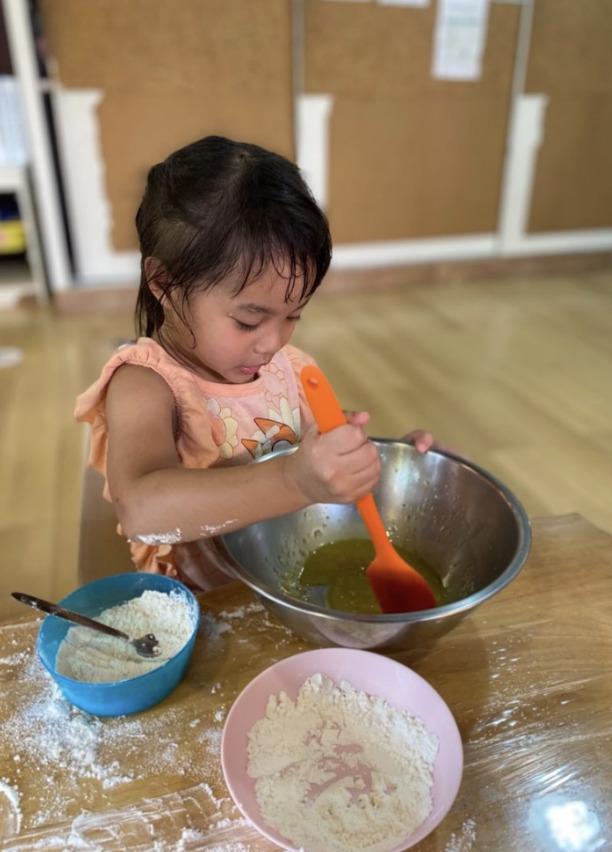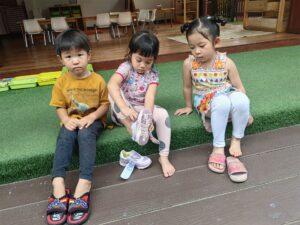Kindergarten is an exciting stage where children begin to explore the world more
independently. As parents and teachers, one of the greatest gifts we can give them is an
environment that encourages them to do things for themselves, make choices, and feel
confident in their abilities. Independence isn’t just about “doing it alone” — it’s about
building skills, responsibility and self-belief that will last a lifetime.
- Setting up the environment is a great starting point. In the classroom, materials are
stored in clearly labeled bins, shelves, or baskets placed at a child’s height. At home,
you can try a similar approach — keep toys, supplies, and books in easy-to-reach
spots so children can choose and put things away on their own. Simple picture labels
or charts also help children remember where things belong. - Routines play a big role too. When children follow a predictable daily pattern —
putting their bags in the cubbies, washing hands before snack or putting away toys
after play — they learn to take responsibility for their actions. These small, repeated
steps gradually become habits, helping them act independently without constant
reminders. - Offering choices is another powerful tool. Instead of telling children exactly what to
do, give them simple, guided options — “Would you like to read first or draw?” or
“Do you want to wear the red shirt or the blue one?” Choices make children feel
respected and capable, while also teaching decision-making skills.
It’s also important to let children try and learn from mistakes. If their tower of blocks falls
over or they spill water while pouring, it’s part of the learning process. Resist the urge to
immediately “fix” things — instead, offer gentle encouragement: “That didn’t work out, what
could we try next?” This builds problem-solving skills and resilience.
At the heart of supporting independence is trust. When we show children that we believe they
can try, even if it’s tricky, they start to believe it too. Whether it’s zipping a jacket, sharing
their ideas, or solving a puzzle, every success — big or small — boosts their confidence.
By creating a supportive environment, both at school and at home, we can help our
kindergarten children grow into confident, capable, and independent learners who are ready
for every new challenge ahead.












